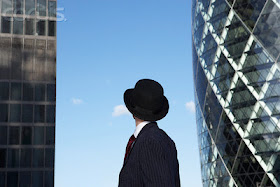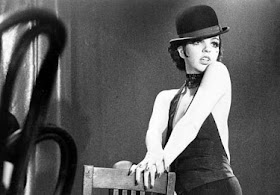
What is more quintessentially English than the Englishman sporting a bowler hat and pinstripe business suit? What would Charlie Chapman or Laurel and Hardy be without their respective bowlers?

The bowler hat (typified by the rounded crown) was devised in 1849 by the London hat makers Thomas and William Bowler to fulfill an order placed by the firm of hatters Lock & Co. of St James's. Lock & Co. had been commissioned by a customer to design a close-fitting, low-crowned hat to protect his gamekeepers' heads from low-hanging branches while on horseback. The keepers had previously worn top hats, which were easily knocked off and damaged. Lock & Co. then commissioned the Bowler brothers to solve the problem. And thus a classic iconic form of headwear was born!

Now significantly recognised as being the uniform of the English businessman, the bowler is much more than that.



The bowler has showed up in more than one unusual setting and has been adopted by the most unlikely people. The bowler, not the cowboy hat or sombrero was the most popular hat in the American West. Cowboys and railroad workers alike preferred the hat because it wouldn't blow off easily in strong wind, or when sticking one's head out the window of a speeding train.

The bowler, called a bombin in Peru and Bolivia, has been worn by Quechua and Aymara women since the 1920s, when it was introduced to Bolivia by British railway workers.

Magritte was significantly enamored with the bowler as it appears in two of his most famous and recognised paintings “The Son of Man” and “Man in a Bowler Hat”.


Helena Rubinstein was known for her signature bowler hats which she wore continuously in later life. The once traditional masculine accessory on Madame’s head was given a more feminine fashion aesthetic, which was immortalized by Liza Minnelli in Cabaret.


On one side the bowler is the representation of the polished self assured businessman and a symbol of the establishment, however in “A Clockwork Orange” it is the establishment’s antithesis. The symbol is turned upside down, where the hat and its wearers symbolise everything the establishment is not. Anarchy and violence.


Men, look very polished and fashion savvy when wearing a bowler as it denotes a sense of self confidence. As we all know placing an article of apparel on ones head is not done unselfconsciously. Whether the wearer is making a statement about his liberation, or being glib or ironic, the fact is that both the union man and the banker all have worn the same hat at some stage or another.









 Now readily available from a large variety of sources from high end million dollar antiques or just a visit to your local Chinatown, the look can be achieved within many a budget.
Now readily available from a large variety of sources from high end million dollar antiques or just a visit to your local Chinatown, the look can be achieved within many a budget. 